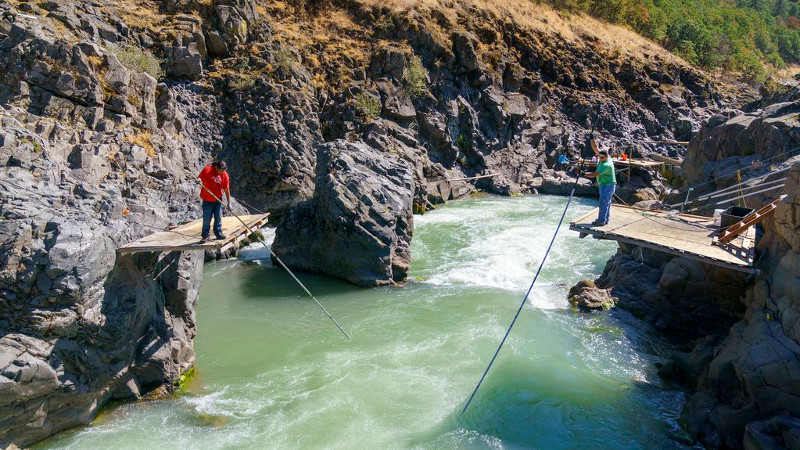-
Regulatory and resource agencies sometimes require collection of benthic macroinvertebrates and/or fish for baseline data or permit compliance. It is too common for them to not know what they will do with the data. Correctly analyzing and interpreting these data yields valuable information that operators and regulators can use to make well-informed decisions regarding Clean Water Act compliance. Aquatic biotic communities reflect ambient water quality conditions much better than do chemical concentrations.
-
Natural resource operators are directly affected by habitat preservation requirements for species listed under the ESA and state equivalents. One possible explanation is that environmental decision-makers do not have sufficient information, ecological training, or appropriate analytical tools so they fall back on the precautionary principle (hope for the best, prepare for the worst) and declare that all actual and potential habitat for the species be left untouched for population sustainability. This is both unnecessary and wasteful as there are robust statistical and spatio-temporal models that can inform technically sound and legally defensible decisions, even with limited data.
-
Sage-grouse, salmon, desert tortoise, and many other animals are listed under the Endangered Species Act (ESA) or are being considered for listing. Much data have been collected on population abundance, distribution, and habitat quantity and quality. Unfortunately, most biotic data are incorrectly analyzed because count data differ from continuous data and require different statistical models. Because ineffective policy decisions result from inappropriate models correct analytical results are critical for regulated industries, regulators, and other stakeholders.
-
From baseline conditions for environmental impact assessments to compliance with regulatory permit conditions regulated companies collect biological data and report analytical results to regulators and other interested parties. Historically, analyses used biotic diversity and integrity indices. These attempt to summarize highly complex natural ecosystems in a single number believed to make comparisons and decisions easier. While these indices are based on ecological theory they are very difficult, even impossible, to measure and quantitatively compare.
-
Many common threads connect geographically separate regulatory and public concerns. Oregon has peak and ecological flows for water storage projects, Nevada has water quality draining from waste rock disposal areas (RDAs), West Virginia (and other Appalachian coal mining areas) has downstream water quality and aquatic biota from valley fill runoff. Related concerns involve fish and the Endangered Species Act (ESA): bull trout in Idaho; salmon in Oregon and Washington; Lahontan cutthroat trout in Nevada.
-
Environmental Issues Involving Fish and Wildlife
Categories: Estimated reading time: 2 minutes
There are many plant and animal species considered to be threatened, endangered, or of special concern to regulators and the public. Correctly estimating population sizes, relationship to habitats, and potential effects of industrial activities is crucial to many permit issues and lawsuits. Other environmental issues are more broad, such as quantifying relationships of industrial activities and natural ecosystems. The most effective approach to addressing these issues is to quantify causality (cause-and-effect) and explain it in language understood by non-technical decision-makers or finders of fact. -
The original form of this article was submitted on March 31, 1995 as the Direct Service Industries’ comments to draft regulations proposed by the U.S. Fish and Wildlife Service (FWS) and the National Marine Fisheries Service (NMFS, now NOAA Fisheries). The two agencies wanted to define “distinct population segments” under the Endangered Species Act (ESA) so that they would have a consistent definition for their regulatory decisions. Unfortunately, administrative convenience and political accommodation replaced science in the definition.
-
Improving the ESA
Categories: The United States’ Endangered Species Act (ESA) is based on societal values, not science. For practical as well as political reasons, the ESA should remain an active, Federal statute. However, many modifications can be made in the language of the ESA to greatly improve its implementation and enforcement. Some proposed changes are minor; others will have major impact on the law. My intentions for suggesting these changes are: To make the ESA more reasonable, effective and accepted (by the regulated public). -
There are many animal species whose population numbers bring them to the attention of resource agencies and others; e.g., Greater sage-grouse, Oregon spotted frog, Lahontan cutthroat trout. Some of these species are listed under the ESA, others are not; in both cases accurate estimates of population size and limiting factors are critical for informed policy and management decisions. Correctly measuring population size and the factors affecting it is not always obvious because of the data formats and mathematical formulation of the statistical models.
-
There are many plant and animal species considered to be threatened, endangered, or of special concern to regulators and the public. Correctly estimating population sizes, relationship to habitats, and potential effects of anthropomorphic activities is crucial to making informed policy and regulatory decisions. Download the PDF.
1 of 2
Next →
